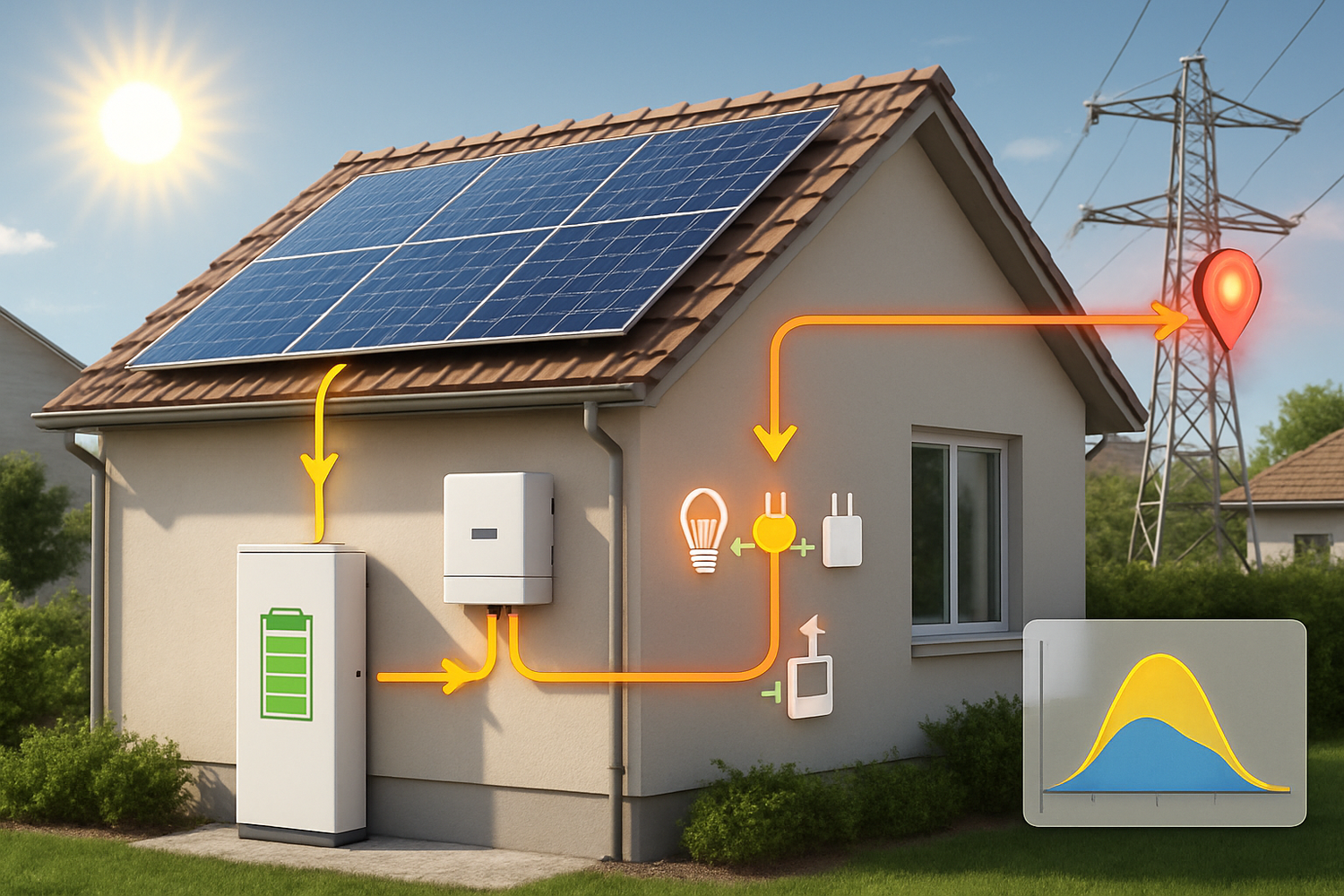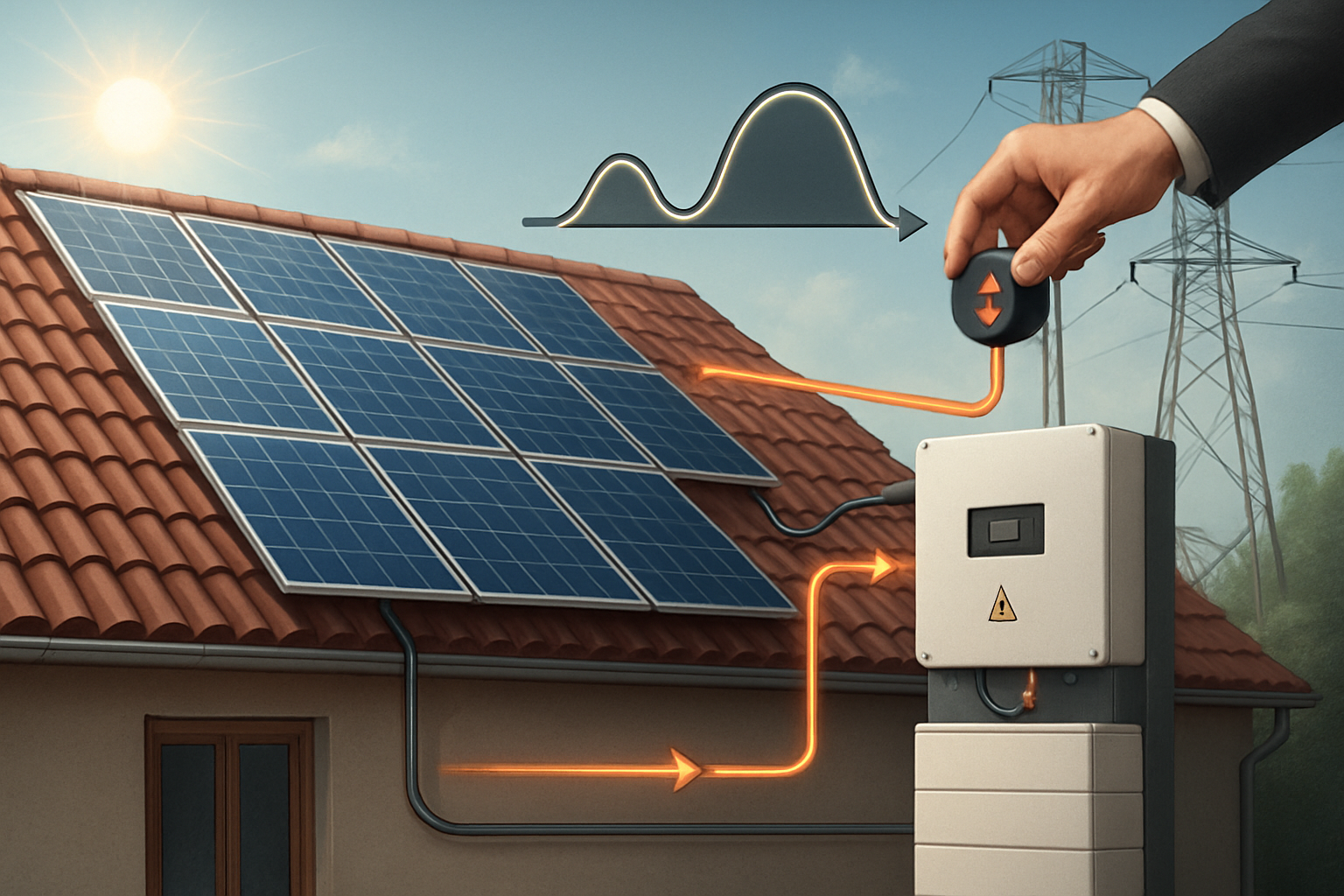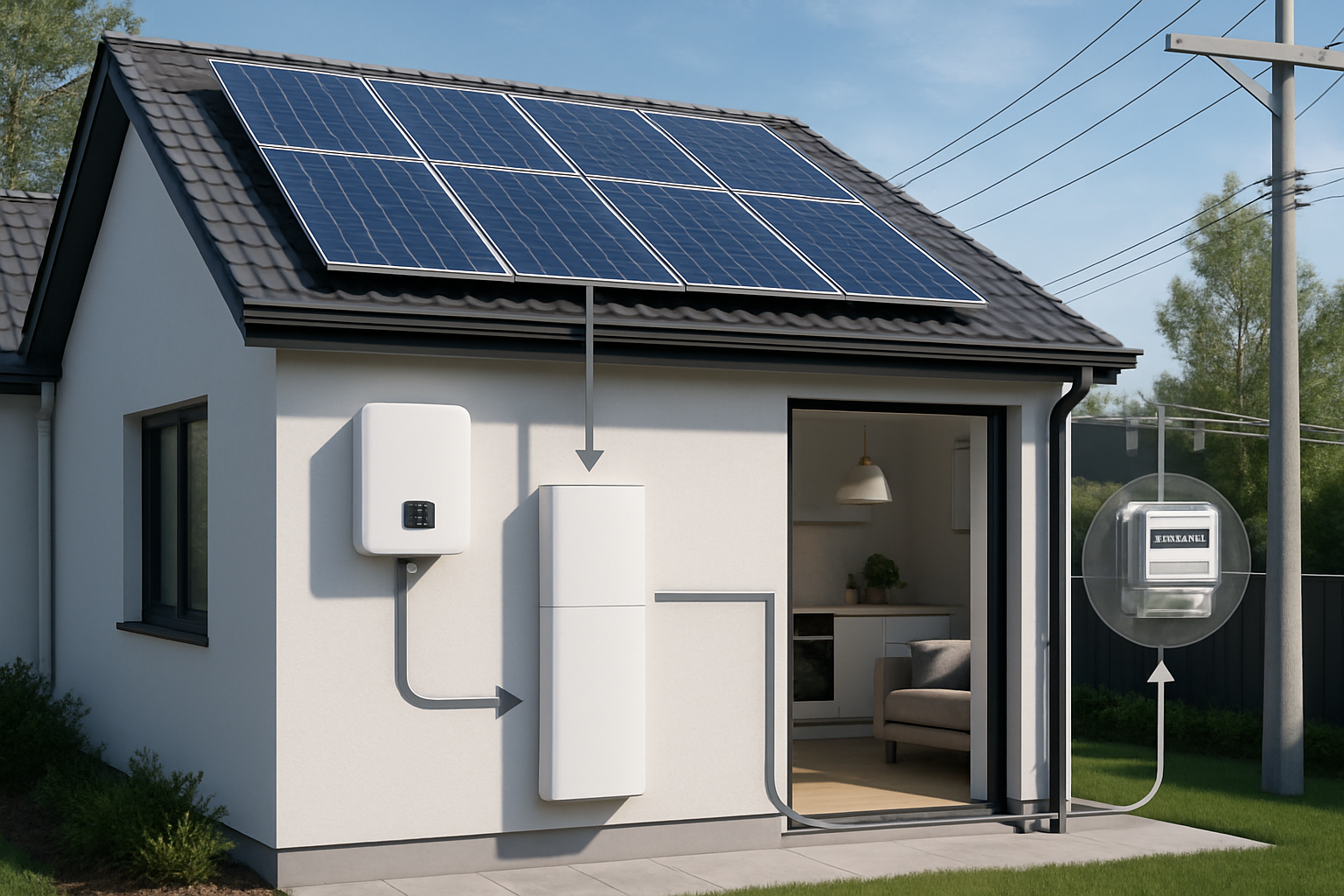Solar energy offers a path to energy independence and reduced utility bills. However, a phenomenon known as PV curtailment can sometimes limit the full potential of your solar panels. This article explains PV curtailment and reveals how a home energy storage system (ESS) provides a powerful solution, ensuring you capture and utilize every watt your solar array generates.

Understanding PV Curtailment
PV curtailment occurs when your solar power system generates more electricity than the grid can accept or your home can consume at a given moment. The grid operator then instructs your inverter to reduce its output. This means your solar panels are producing energy, but you cannot use or sell it, effectively wasting valuable renewable energy.
What Causes Curtailment?
Several factors contribute to solar curtailment. Grid limitations are a primary cause, especially in areas with high solar penetration. When many solar systems feed into the grid simultaneously, it can lead to an oversupply of electricity, exceeding the local grid infrastructure's capacity. Grid operators must maintain stability, and sometimes this means reducing solar input. Regulatory policies, such as export limits or specific time-of-day restrictions, also play a role, dictating how much solar energy you can send back to the grid. For instance, the IEA's Next-Generation Wind and Solar Power report highlights that policies can encourage system-friendly variable renewable energy (VRE) by optimizing generation time profiles.
The Impact on Your Solar Investment
Curtailment directly impacts the financial returns of your solar investment. When your system is curtailed, you lose out on potential savings from self-consumption and revenue from selling excess energy back to the grid. This reduces the overall efficiency and economic viability of your solar installation. The U.S. Department of Energy's Solar Futures Study, for example, illustrates "Annual curtailment under the core scenarios" in its projections, indicating that curtailment is a significant consideration for future solar deployment.
The Role of Home Energy Storage Systems (ESS)
A home energy storage system (ESS) is a key solution to combat PV curtailment. It allows you to capture and store the excess electricity your solar panels generate instead of sending it back to an overwhelmed grid or having it curtailed. This stored energy becomes available for later use, enhancing your energy independence.
Components of a Modern Home ESS
A typical home ESS integrates several critical components:
- Lithium Iron Phosphate (LiFePO4) Batteries: These batteries are known for their high performance, safety, and reliability. They offer a long cycle life and stable operation, making them an ideal choice for residential energy storage.
- Hybrid Inverter: This intelligent device manages the flow of electricity, converting the direct current (DC) from your solar panels into alternating current (AC) for your home. It also directs excess solar energy to the battery for storage and draws power from the battery when needed.
- Solar Panels: The core of your renewable energy generation, converting sunlight into electricity.
How ESS Actively Prevents Curtailment
When your solar panels produce more electricity than your home demands, a home ESS automatically diverts this surplus energy into its batteries. This process prevents the excess power from overloading the grid and triggering curtailment. Instead of being wasted, the energy is stored for later use, such as during peak demand hours, at night, or during grid outages. According to the IEA, installing battery storage systems with distributed solar PV effectively increases self-consumption and reduces reverse power flows into the local grid.
Benefits Beyond Curtailment Prevention
Integrating a home ESS offers advantages beyond just avoiding curtailment:
- Increased Self-Consumption: You maximize the use of your self-generated solar power, reducing reliance on grid electricity.
- Energy Independence: Stored energy provides a buffer against grid outages, ensuring power supply even when the grid is down.
- Peak Shaving: You can draw power from your battery during expensive peak utility rate periods, lowering your electricity bills.
- Grid Stability: By managing your own energy, you contribute to a more stable and resilient local grid.
Implementing Home ESS for Optimal Solar Management
To effectively prevent PV curtailment and maximize your solar investment, careful planning and integration of your home ESS are crucial. This involves selecting the right system size, ensuring proper inverter functionality, and adopting smart energy management strategies.
Sizing Your ESS for Curtailment Management
The ideal size of your home ESS depends on your solar generation capacity, your typical energy consumption patterns, and the extent of potential curtailment in your area. An undersized battery may still lead to some curtailment, while an oversized one might be an unnecessary expense. Consider your daily energy usage, especially during peak solar production hours, and how much excess energy your system typically generates. For example, the Solar Futures Study highlights the "Change in net load shape from deploying PV with or without storage," demonstrating how storage can significantly alter energy flow.
A simple calculation involves estimating your average daily excess solar production and matching it with battery capacity. Consulting with an energy expert can help you determine the most cost-effective and efficient ESS size for your specific needs.
Integration with Hybrid Inverters
Hybrid inverters are central to an effective home ESS. They intelligently manage the flow of electricity between your solar panels, batteries, home loads, and the grid. For instance, the IEA's China Power System Transformation report mentions that innovative use of existing pumped hydro storage (PSH) has changed its operational mode to absorb surplus solar PV output during the day, illustrating the principle of shifting energy with storage.
These inverters often come with advanced features, including:
- Real-time Monitoring: Track your energy production, consumption, and storage levels.
- Programmable Modes: Set your system to prioritize self-consumption, grid export, or battery charging based on time-of-use rates or grid conditions.
- Blackout Protection: Automatically switch to battery power during grid outages.
Smart Energy Management Strategies
Beyond hardware, smart energy management software and practices enhance the effectiveness of your home ESS. These systems can learn your energy habits and optimize energy flows. For example, they can pre-charge batteries when solar production is high and discharge them when electricity prices are highest. This dynamic management ensures you are always making the most of your solar energy and stored power, further reducing the likelihood of PV curtailment.
Securing Your Solar Future
PV curtailment presents a challenge to maximizing solar energy's benefits, but home energy storage systems offer a robust and practical solution. By integrating reliable LiFePO4 batteries, sophisticated hybrid inverters, and smart energy management, you gain control over your solar power. This approach not only prevents the waste of valuable renewable energy but also enhances your energy independence, provides backup power, and optimizes your electricity costs. Embracing home ESS ensures your solar investment delivers its full potential, contributing to a more sustainable and resilient energy future.
Frequently Asked Questions
What is the difference between PV curtailment and solar clipping?
PV curtailment occurs when the grid operator or utility intentionally reduces your solar system's output due to grid constraints or oversupply. Solar clipping, on the other hand, happens when your inverter's maximum power output rating is lower than your solar panel array's peak production capacity. The inverter simply cannot process all the power the panels generate, effectively 'clipping' the top off your production curve. While both result in lost solar energy, curtailment is an external grid-driven event, and clipping is an internal system design limitation.
Are home ESS systems expensive?
The initial investment for a home ESS can vary based on battery capacity, inverter type, and installation complexity. However, the long-term savings from reduced electricity bills, increased self-consumption, and potential grid incentives can offset these costs. Furthermore, battery technology, particularly LiFePO4, continues to become more efficient and cost-effective, making ESS more accessible. The U.S. Department of Energy's Solar Futures Study projects a significant increase in storage deployment, indicating growing affordability and adoption.
Can I install a home ESS with an existing solar panel system?
Yes, in many cases, you can retrofit a home ESS to an existing solar panel system. This often involves adding a hybrid inverter compatible with your current setup and integrating the battery storage. It is advisable to consult with a qualified solar and energy storage professional to assess your existing system and recommend the best integration strategy.
How long do home ESS batteries typically last?
Modern LiFePO4 batteries, commonly used in home ESS, are designed for longevity. They typically offer a cycle life of 6,000 to 10,000 cycles or more, which often translates to 10 to 15 years of reliable operation, depending on usage patterns and environmental conditions. Many manufacturers also provide extensive warranties, ensuring peace of mind for your investment.





Leave a comment
All comments are moderated before being published.
This site is protected by hCaptcha and the hCaptcha Privacy Policy and Terms of Service apply.